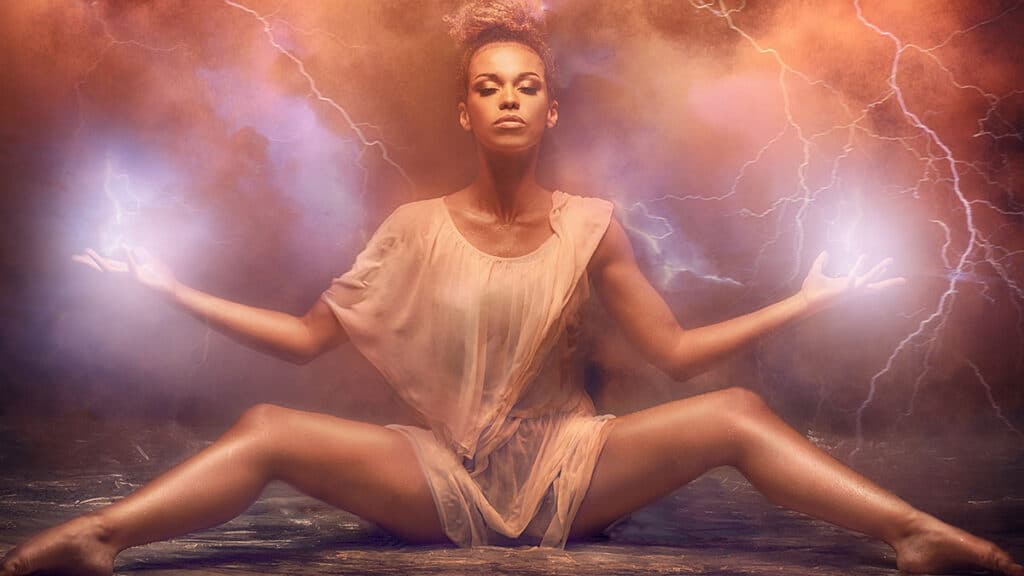
Oyá is the Yoruba orisha of storms of wind and lightning, of death and rebirth, a symbol of change. She is the goddess of the Niger River and patron of the marketplace, the traditional center of community life, where we gather to drum, sing, dance, tell stories, buy and sell, and find love. She leads an army of Egun (ancestors). That’s significant because women are the guardians of culture, the culture passed on to us from our ancestors.
Oyá is a fierce warrior. In many ways, she is like her husband Changó, the orisha of thunder, lighting and war. They always fight together, but also love to sing and dance. Changó is actually a historical figure who was deified. He built Oyó state, which was the height of Yoruba power in Nigeria, Benin and Togo. He created the batá two-headed drum which is sacred in Cuba. Oyá is venerated in the former Oyó state.
NOTE: Yoruba traditions are oral traditions that vary by region, community, and even by family. That doesn’t make them any less valid than traditions written in old books. The traditions originate in Yorubaland, which is part of the modern states of Nigeria, Benin, and Togo; yet they are familiar to traditional communities across West Africa and Central Africa. Things are slightly different in the Americas where African traditions where preserved by being syncretized “blended” with European colonial traditions, so the colonizers wouldn’t know what was going on, and wouldn’t punish the people for practicing their heritage faiths. Haiti, Cuba, and Brazil are major centers of Yoruba traditions, but they are everywhere the African Diaspora is. Before the industrial religions became powerful, there were similar traditions around the world. The old Greek gods were very similar.
Signs of Oyá
Oyá’s number is nine. She likes copper. Some followers wear 9 copper bracelets.
Her eleke (protective necklace) is usually reddish-brown.
Her skirt has nine colors, mostly burgundy and brown. Because of her many colors, some say she owns rainbows. When Oyá dances, her twirling skirt causes tornadoes.
She usually carries an iruke (fly whisk) made of a horse’s tail. It’s a Yoruba sign of royalty and the orishas.
Traditions
Oyá guards the cemetery gates. Orisha Yewa, the owner of the cemetery, helps people through the dying process. When ready, she passes them to Oyá to finish the process and be reborn.
There is nothing bad or scary here. In our traditions, we don’t fear the dead. They are ancestral friends and family who help us through the challenges of life. To be possessed by an Orisha is a great honor that helps you move forward in your life. It’s the exact opposite of what many people have been taught.
Syncretization
In the Caribbean, Oyá is syncretized (blended) with the Virgin of Candelaria, the patron saint of the African Canary Islands, and the African Diaspora around the world.
In Puerto Rico, Oyá is much like Atabey, the supreme Tainó god. Atabey also owns the wind, rain, lightning, and hurricanes. The similarity in the traditions is uncanny because they are pre-European contact and separated by the Atlantic Ocean. Humans do similar things around the world and across time.
Jennyselt Galata Teaches Us to Dance With Our Hearts
The most beautiful part of this video comes at about 8:30 when after some dancing, the student of Oyá says, “Jennyselt told me to always dance with my heart.”
¡Maferefún Oyá!
